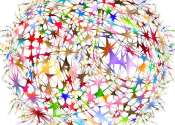Qantas says app glitch exposed passengers' travel details
Qantas apologized Wednesday after a "technology issue" with its mobile app exposed users' travel details including their names, flights and points.
May 1, 2024
0
12
Security

Qantas apologized Wednesday after a "technology issue" with its mobile app exposed users' travel details including their names, flights and points.
May 1, 2024
0
12
Internet

Facebook says it's working to limit the spread of misinformation and potentially harmful content about the coronavirus as bogus claims about the ongoing outbreak circulate online.
Jan 31, 2020
0
0
Computer Sciences

Image segmentation, the process of separating a digital image into multiple sections for individual examination, is frequently used in medical image analysis. For example, segmentation in ultrasound footage helps identify ...
Apr 27, 2016
0
3
Business

TikTok influencers boasting collectively more than 51 million followers say they won't work with Amazon until the e-commerce colossus delivers key concessions to workers and halts anti-union efforts.
Aug 24, 2022
0
7
Machine learning & AI

It's no secret, artificial intelligence (AI) is changing the customer service game.
Feb 23, 2022
0
11
Machine learning & AI

Artificial intelligence systems are smart. They can recognize patterns better than humans, for example. Yet humans are still very much needed. How can you better steer those AI systems? LIACS lecturer Jan van Rijn wrote a ...
Mar 22, 2022
0
22
Engineering

For residents of rural and underserved areas, access to emergency medical care can be a matter of life and death. With limited access to health care services and long ambulance wait times due to distance, these communities ...
May 18, 2023
0
8
Business

Artificial intelligence is already powering much of the technology helping to drive the modern economy. AI is now an essential part of how we use the internet but can also be found in stock exchanges, advanced factories and ...
Jan 15, 2020
0
26
Security

City services in New Orleans were hobbled Monday as the city operated under an emergency declaration following a cyber attack that locked down its main computer networks.
Dec 16, 2019
0
7
Business

Amazon on Tuesday made a priority of medical supplies and household staples, putting shipments of other goods on hold to focus on key items during the coronavirus outbreak.
Mar 18, 2020
0
4
A drug, broadly speaking, is any substance that, when absorbed into the body of a living organism, alters normal bodily function. There is no single, precise definition, as there are different meanings in drug control law, government regulations, medicine, and colloquial usage.
In pharmacology, a drug is "a chemical substance used in the treatment, cure, prevention, or diagnosis of disease or used to otherwise enhance physical or mental well-being." Drugs may be prescribed for a limited duration, or on a regular basis for chronic disorders.
Recreational drugs are chemical substances that affect the central nervous system, such as opioids or hallucinogens. They may be used for perceived beneficial effects on perception, consciousness, personality, and behavior. Some drugs can cause addiction and/or habituation.
Drugs are usually distinguished from endogenous biochemicals by being introduced from outside the organism.[citation needed] For example, insulin is a hormone that is synthesized in the body; it is called a hormone when it is synthesized by the pancreas inside the body, but if it is introduced into the body from outside, it is called a drug.[citation needed] Many natural substances, such as beers, wines, and psychoactive mushrooms, blur the line between food and recreational drugs, as when ingested they affect the functioning of both mind and body and some substances normally considered drugs such as DMT (Dimethyltryptamine) are actually produced by the human body in trace amounts.
This text uses material from Wikipedia, licensed under CC BY-SA